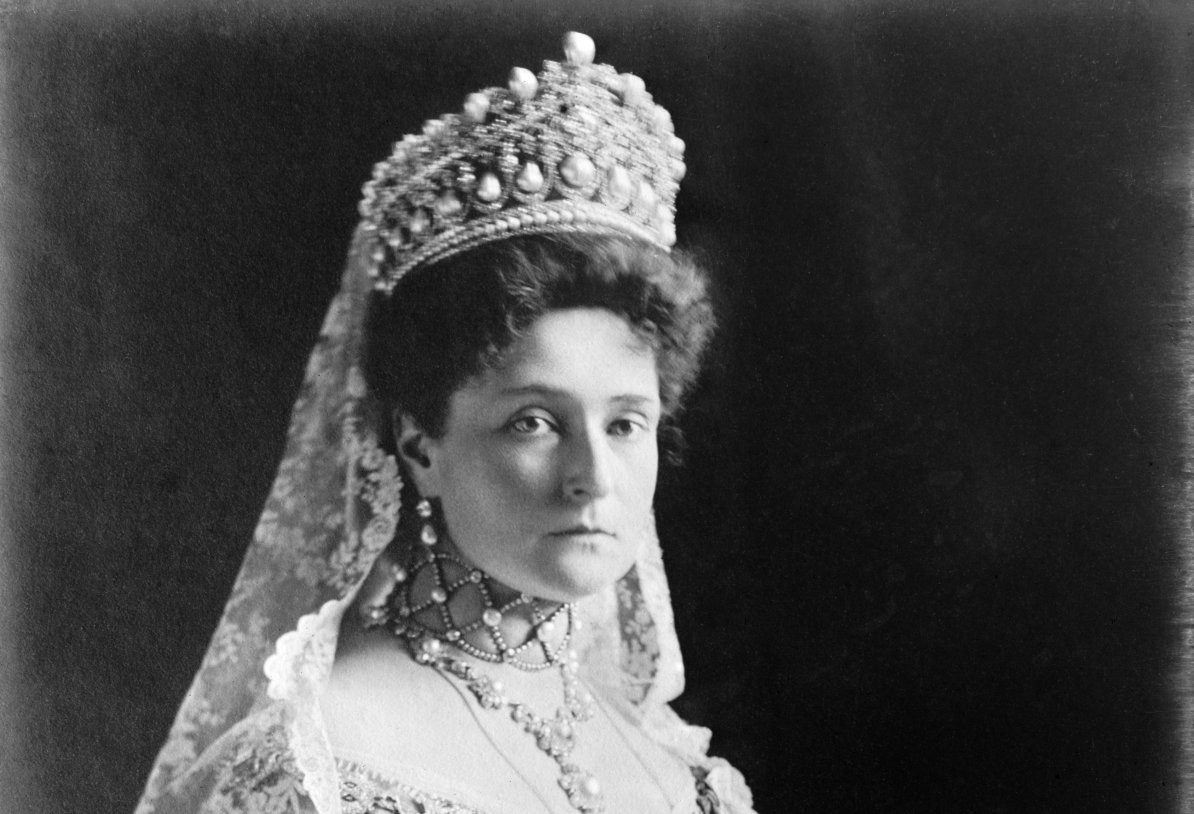
Yesterday marked the anniversary of the birth of Alexandra Feodorovna, the German princess who became the last Empress of Russia. Today, let’s have a closer look at her most imposing jewel: her pearl and diamond diadem.
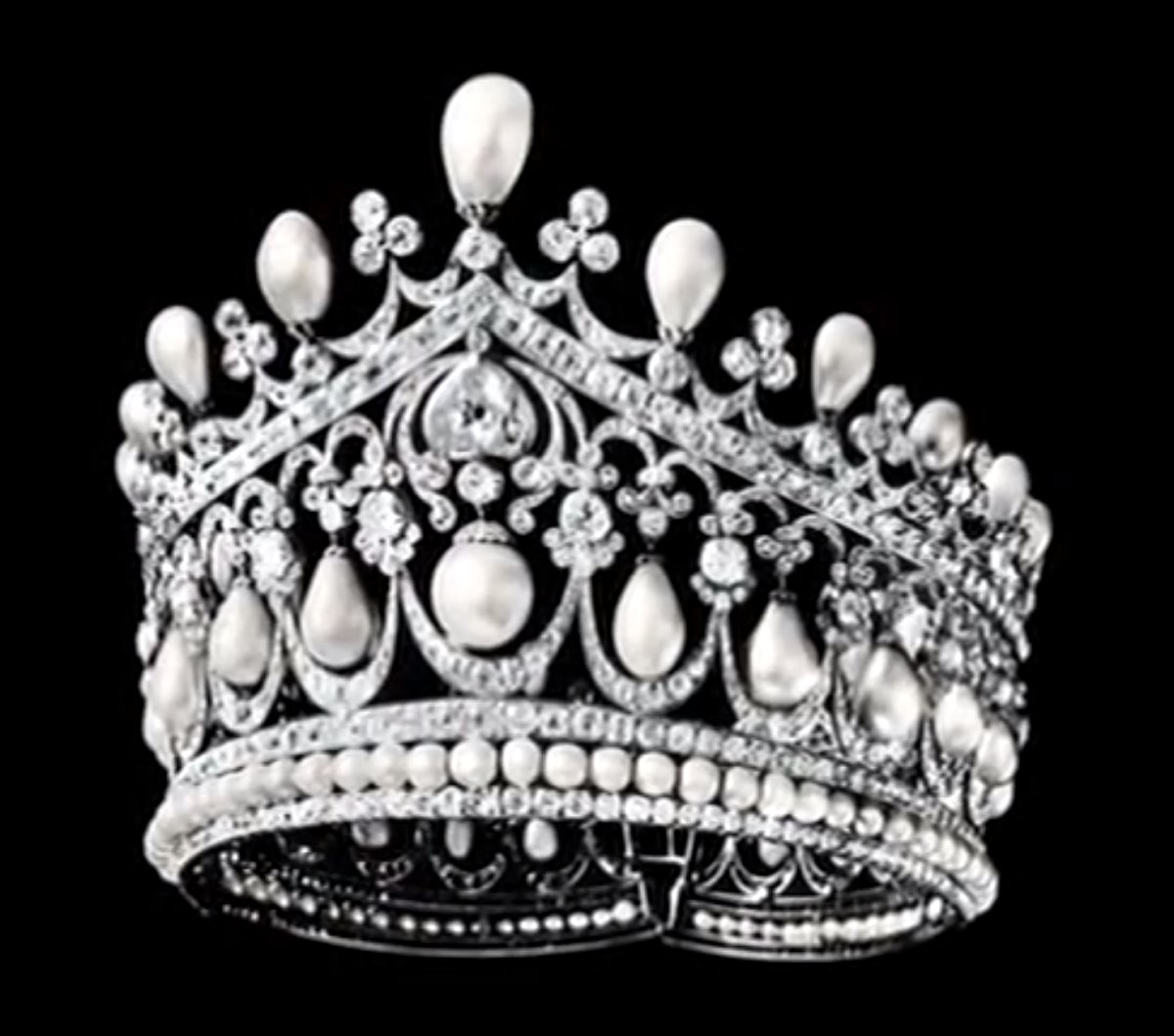
The diadem—which seems like the appropriate description of the head ornament, which is really too large to be described as a tiara—has a slightly uncertain provenance. We know that it was in Alexandra’s collection by 1906, but historians don’t seem to agree on the details of its creation. A.E. Fersman, who made the famous catalogue of Romanov jewels after the revolution, listed the diadem as a nineteenth-century jewel; he reportedly believed that the diadem was the most impressive jewel from the entire collection. In Jewels of the Romanovs, Stefano Papi takes issue with Fersman’s creation date, arguing that the diadem was “made by the court jeweller Bolin expressly for the Tsarina,” but with “antique pearls and diamonds from the Imperial Collection.”
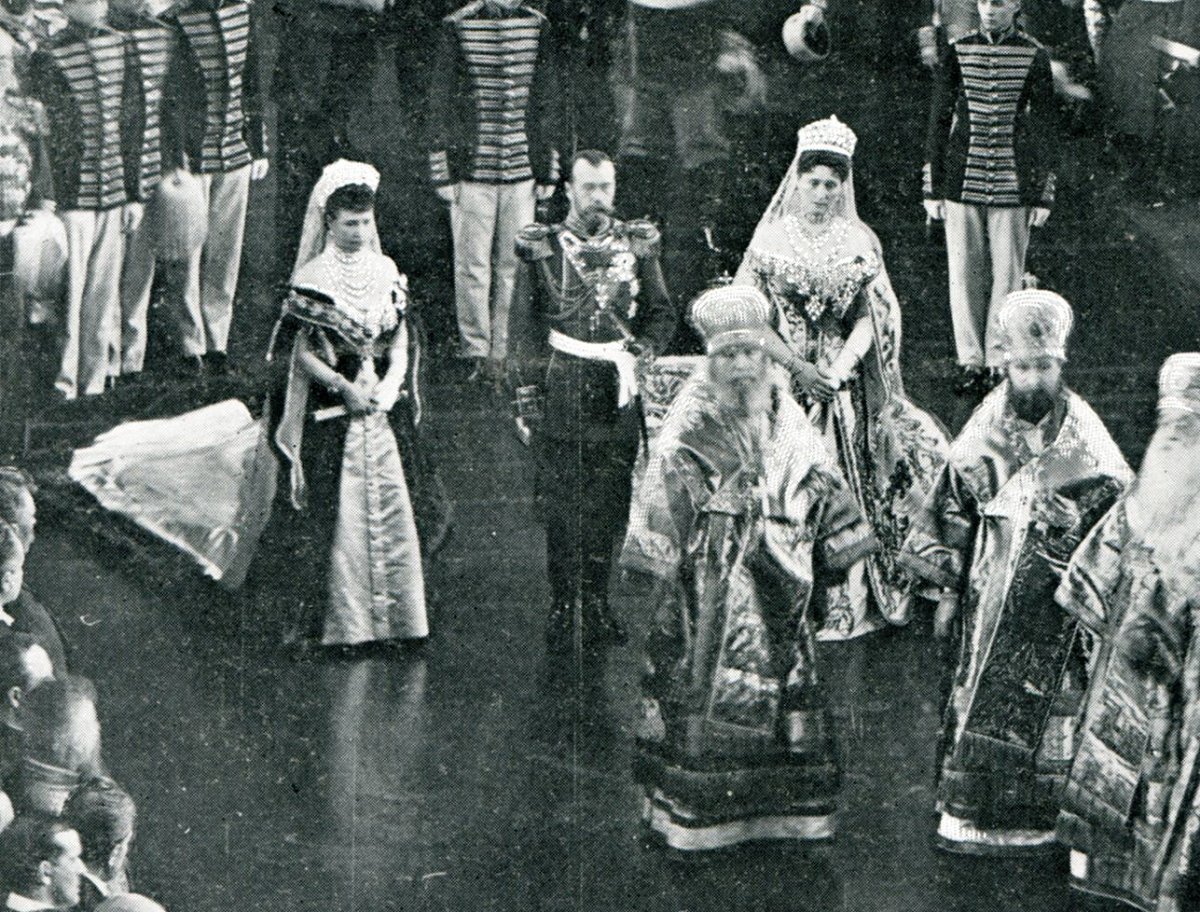
We know that the imposing diamond and pearl jewel was in Alexandra’s collection by the spring of 1906. On April 27/May 10, 1906, she wore the diadem for the official opening of the First Duma in St. Petersburg. (In the photograph above, taken during the ceremony, she stands to the left of Emperor Nicholas II, with his mother, Dowager Empress Marie Feodorovna, standing to his right.) A correspondent from the Times was on hand to witness the opening. He described the attire of the two women as follows: “The young Empress was in white and gold, and the Empress Marie in white trimmed with black sable.”
The Duma was a new legislative body in Russia, the equivalent of a lower house of parliament (like the House of Commons in the United Kingdom, for example). The creation of the Duma had been Nicholas’s attempt to make concessions toward those who wanted more participations for citizens in governance. (In practice, Nicholas was still essentially an autocrat, and he had the power to veto laws and to dismiss the Duma whenever he liked—which he did, only 75 days after the opening of the session.)
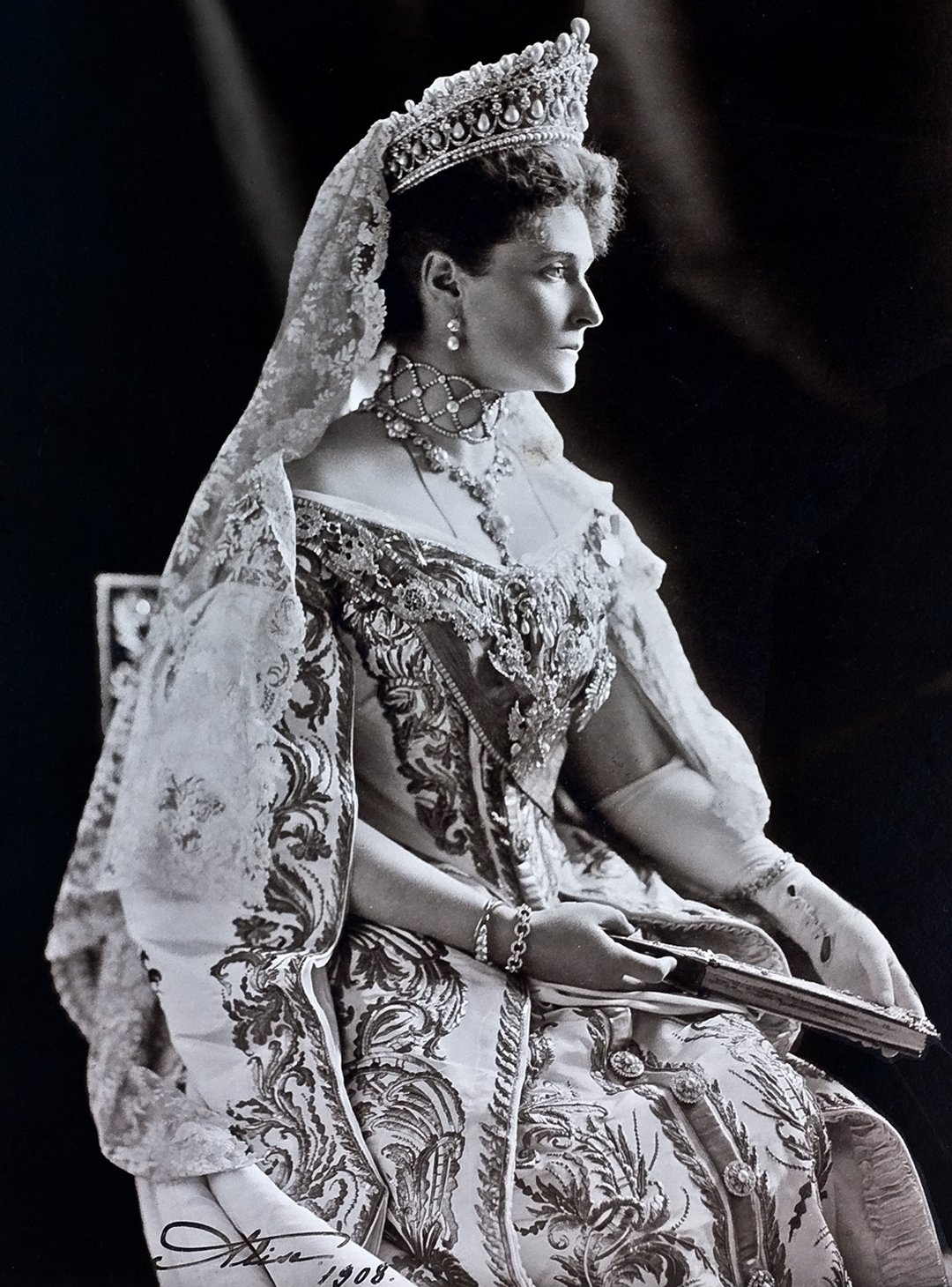
At some point after the Duma opening, Alexandra also sat for a series of photographic portraits wearing the diadem and the rest of her elaborate court dress. The photographs were taken in St. Petersburg by Frederick Boasson and Fritz Eggler, a pair of photographers from Switzerland and Germany who became popular court portraitists, working often with the royal family. Just like the provenance of the diadem, there are disagreements about when the portraits were taken. The Library of Congress dates the images to 1908—and, indeed the picture above is signed with that date. But Stefano Papi believes that the photographs were taken shortly after the Duma opening in 1906 (and attributes them to a different photographer, Karl Bulla).
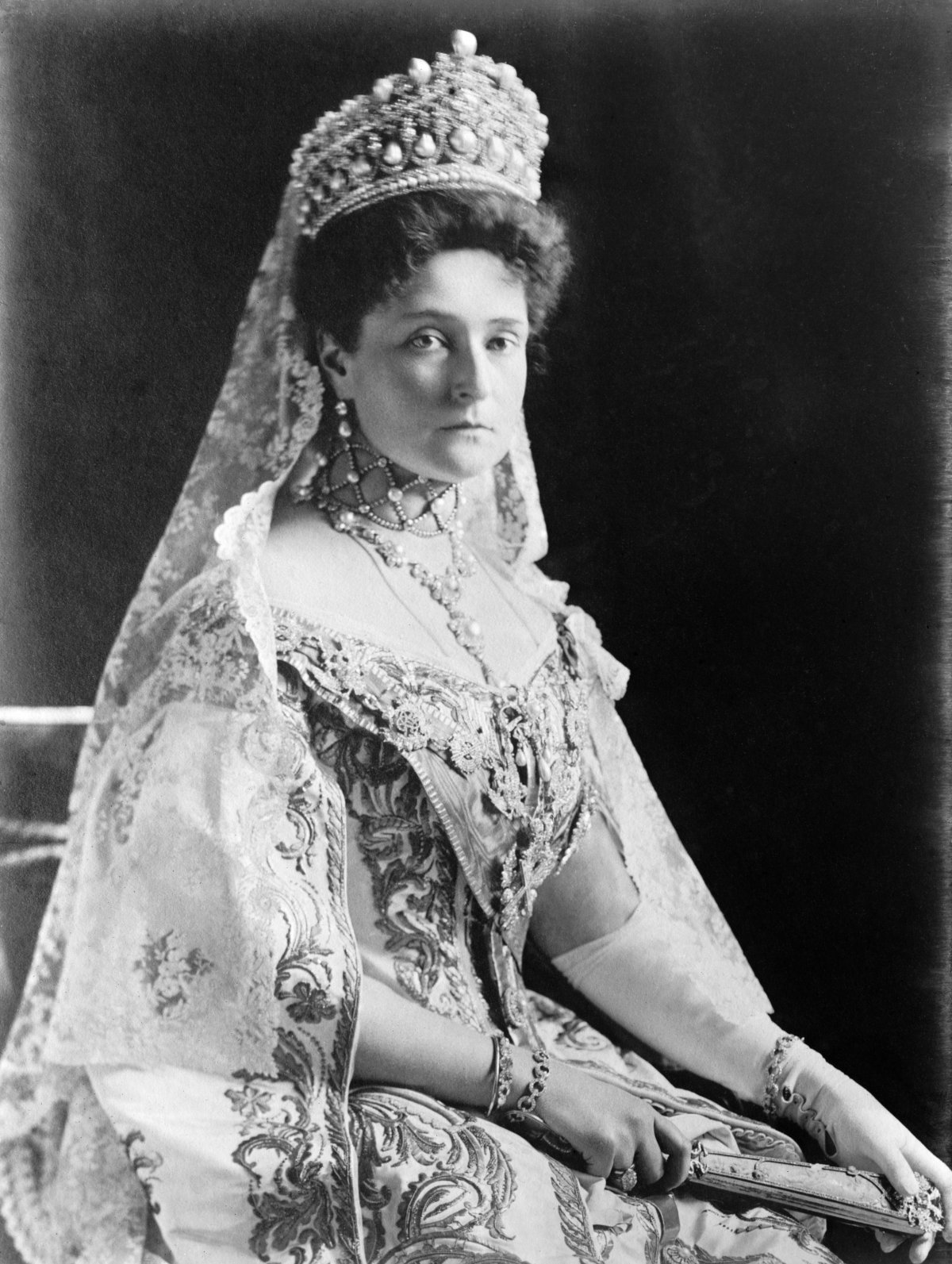
The images depict Alexandra in full imperial court dress, including jewels, a veil, imperial orders and decorations, and an elaborately embroidered court gown. Her bejeweled fan was made by Lalique in 1894, the year of her marriage. Papi notes that both the pearl and diamond choker necklace and the long pearl and diamond cluster necklace were “surely created by Bolin to accompany the diadem,” though neither necklace appears in the Fersman inventory. Papi states it “likely” that the two necklaces were “taken by the Empress to Tobolsk and then disappeared.”
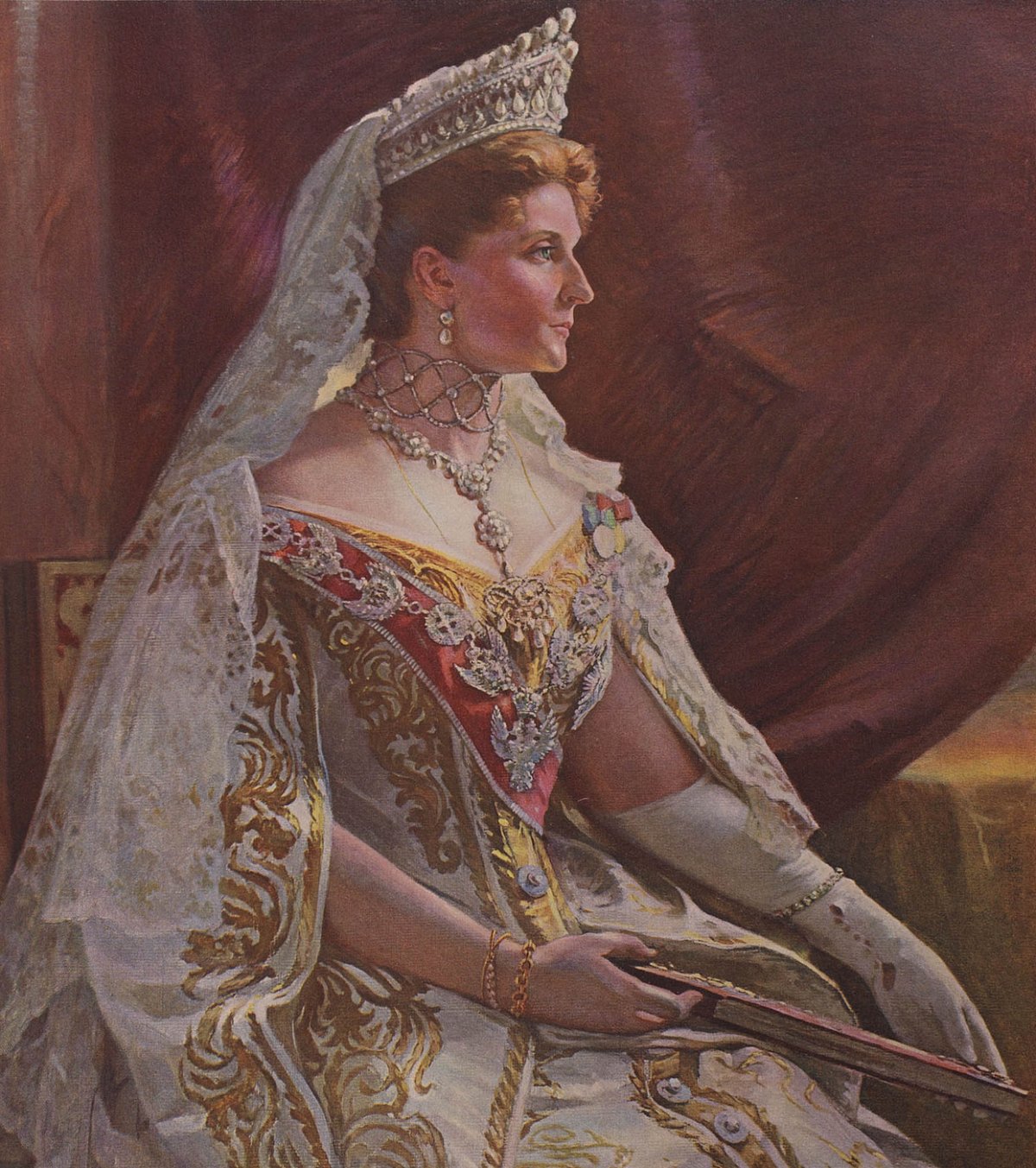
The photographs taken of Alexandra wearing the diadem were later used by Russian painters as source material for imperial portraits. This painting, which is now part of the British Royal Collection, was completed by an unknown artist using the photographs as a reference. The white and gold colors of the empress’s court dress are vividly imagined in the painting, as is the bright red sash of the Order of St. Catherine. (Interestingly, the Royal Collection misidentifies Alexandra’s fan, calling it a book.)
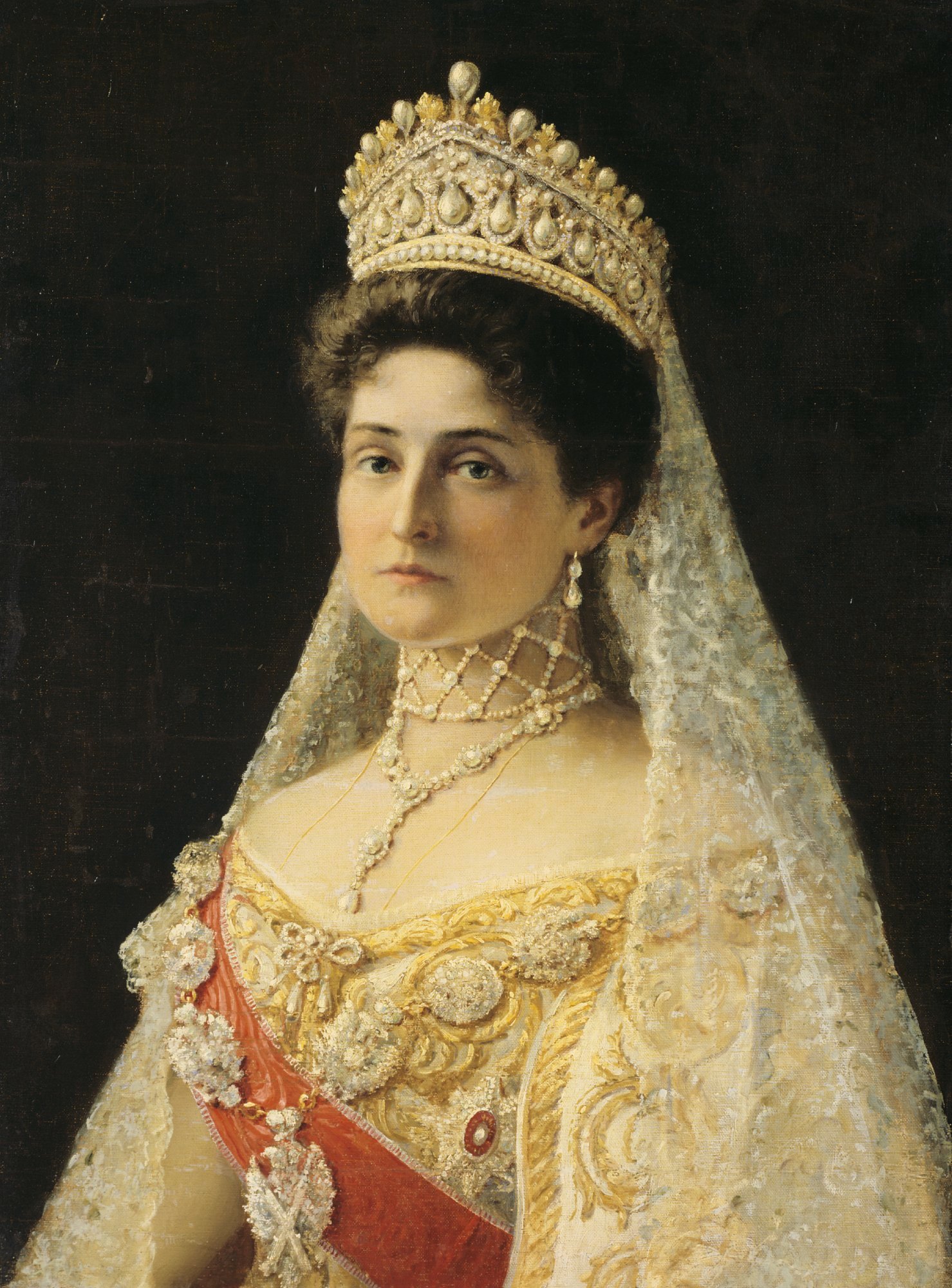
This portrait, which was acquired by Marjorie Merriweather Post and is now part of the Hillwood Museum collection, is also based on the photographs. The notes from the collection describe the empress as “wearing in her brown hair a diadem of diamonds and pearls from the crown jewels,” as well as “a lace veil,” “a bowknot brooch of diamonds and three large pearl drops,” and additional pearl jewels. Her gown is described as made of “white satin with passementerie.”
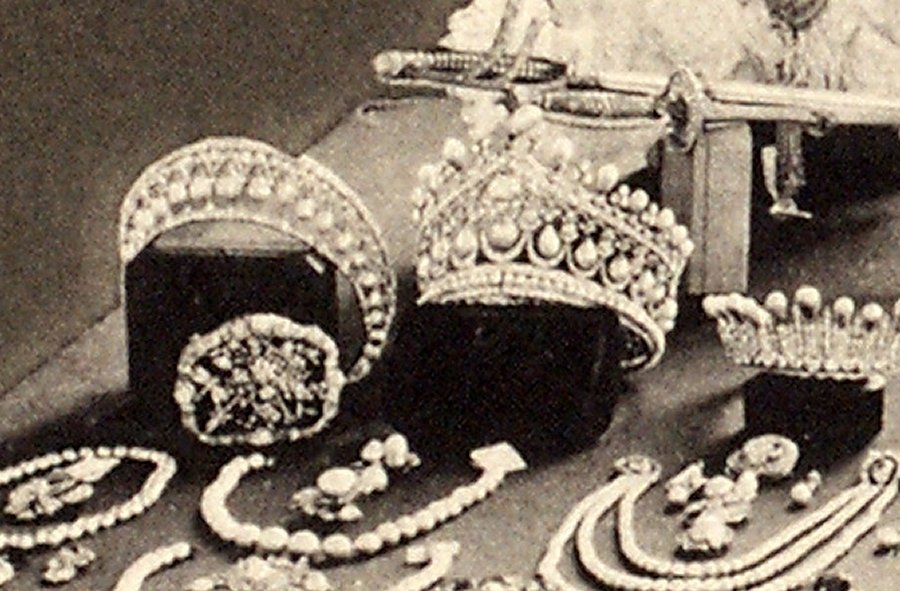
So, what happened to Alexandra’s pearl and diamond diadem? Sadly, I think you’ll be able to guess. The diadem was confiscated by the Bolsheviks during the revolution, and it is easy to spot in the famous inventory photograph featuring the jewels arranged on a large table. (I’ve added a close-up here so you can see it easily.) There’s been no public trace of the diadem since 1922. I think it’s safe to say, almost a century later, that it’s been lost to history.
Leave a Reply
You must be logged in to post a comment.